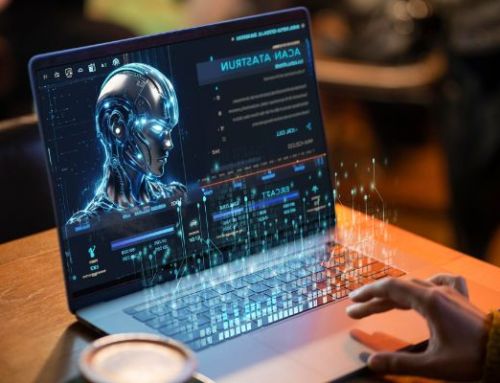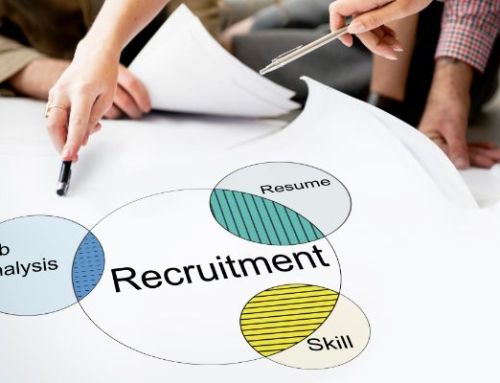
Technology is becoming more and more important in every field of work. In healthcare, education, and transport, products like telemedicine, computer-assisted learning, plagiarism software, and self-driving improve individual and institution efficacy; with the results from their application trickling down to other industries and sectors. As one of the key areas in every organization, HR Management is not left behind.
Also read: Top HR Technology Trends in 2018
Modern technological innovations provide HR Managers with the opportunity to streamline employee training process and development, without compromising work productivity and output.
It is no secret that several technologies have given HR the tools to provide a wide-ranging training experience for employees. In an earlier post, we provided an outline of benefits to try out online learning for your employees and staff in your business.
With a view on emerging trends, we identify new technologies that could impact and further contribute to employee training and engagement.
Venture into Microlearning
The eLearning Library reports that among the e-learning trends for the current year, microlearning ranks top on the list. This is in spite of the debate surrounding research on employee attention span in the learning environment.
Also read: Why Microlearning Should Become Part of Your Training Program
The basis of this development is that as training programs resort to virtual formats, which are in conjunction with employees reaching daily targets in the workplace, acquiring on-the-job training might be difficult for trainees. In addition, the notion exists that employee information retention might be threatened in a persistently distracting work environment.
Thus, program facilitators are beginning to respond to ventures in microlearning, interspersed with trainer-assisted modules, QAAs and peer-to-peer collaboration.
Digital Reality Adoption and Integration
Combining the power of Virtual Reality (VR) and Augmented Reality (AR), weeks ago, Honeywell introduced the Honeywell Connected Plant Skills Insight Immersive Competency. Entirely cloud-based, the simulation tool is geared at bringing employees up to speed on needed skills and technologies. The primary objective of the skill acquisition programme is in response to the dearth of skills available to employees in the present workforce. As the company expects that in the next decade, older employees would be retiring, thus the need to close the gap, for younger employees, in skills acquisition.
Industry news and research platform, Deloitte Insights reports that the use of Digital Reality is experiencing a shift from the creation of novel methods of application for consumers and end-users, to adoption by organizations and industries. The magazine observed that industry leaders have outpaced consumers in the use and emergence of varying applications stimulated by the digital reality platform.
The initial focus being on end-consumers and inventing newer uses, present development is being targeted toward enterprise applications, Head of Google’s AR/VR global strategy as well as VP of business development – Facebook and Occulus, Steven Kan and Ash Jhaveri, confirm.
The above reveals that development in this area is going to be one of the most defining media in employee training and development. In addition, the occurrence above does not only reflect the inclusion of DR in training programs but also showcase the possibility that could emerge when different factions of DR (VR, AR, MR etc.) are integrated in various ways, to bring about a more rounded employee training and experience.
Virtual World Immersion
Relatively still in prototype, the U.S. Office of Personnel Management states that it is possible that Virtual Reality metamorphoses into a new environment, where employees can undergo training, view real-time occurrences on the field, while facilitators are involved, on the spot, for insights and guidance. This is competently referred to as the “virtual world” environment.
Within the platform, facilities like video conferencing, virtual reality, immersive reality would be interspersed to give member and attendees the real-life experience of having attended a seminar or conference.
For safety programs on petroleum production, to instinctually deter laxity while on the job, virtual world could provide new trainees first-hand view of the occurrence of kicks or blowouts, and the after-effects of this occurrence to worker safety and effect on the organization’s bottom line.
Gamification and performance-induced rewards
The Association for Talent Development state that, in addition to the landmarks achieved in training through gamification, enthusing employees through this medium is going to take on new levels.
Also read: Gamification: Playing Your Way to Better Employee Engagement
Intermixed with microlearning and aimed at spurring employee toward self-learning and e-learning, e-rewards linked with performance based on knowledge acquired could be included in employee packages. Employees thereon would no longer require motivation toward self-learning, as reward-based learning propels them into skill acquisition, even when acquired not on individual time.
Aligning employee training with strategic business objectives
More and more, the focus on employee training is no longer targeted at closing skill gaps and priming employees for an immediate upgrade. Trending behavior among top management look to training employees toward leadership succession and organizational change, Entrepreneurship Publication, The Startup conveys. HR Managers and Top Management are willing to invest more funds to imbue employees with additional knowledge to further the strategic objectives of the organization.
The objective currently, is to think long term. While customizing employee training to fill into existing gaps and processes, management can look into the future toward leadership change, business expansion and merger of similar product or service offerings to present business concerns.
The challenge thereon, for third-party training platforms, would be the creation of bespoke training programs and course branding to meet the change and leadership process of unique organization.
Image licensed from Depositphotos.com





Leave A Comment